Batch Insert activity
An activity that puts more than one new database record into a database table

Configure the Batch Insert activity
To configure the Batch Insert activity, do the procedure in this topic.
Good to Know
- In most text fields, you can use process data variables as an alternative to literal data values.
- You can configure whether this activity waits for other activities before it runs.
For more information, refer to How Do I Configure an Activity to Wait for Other Incoming Activities?
- This section shows the configuration settings on the configuration screens for this activity. Other configuration settings apply to system activities. For more information, refer to:
How to Start
- Open Process Builder.
For information about how to open this screen, refer to Process Builder.
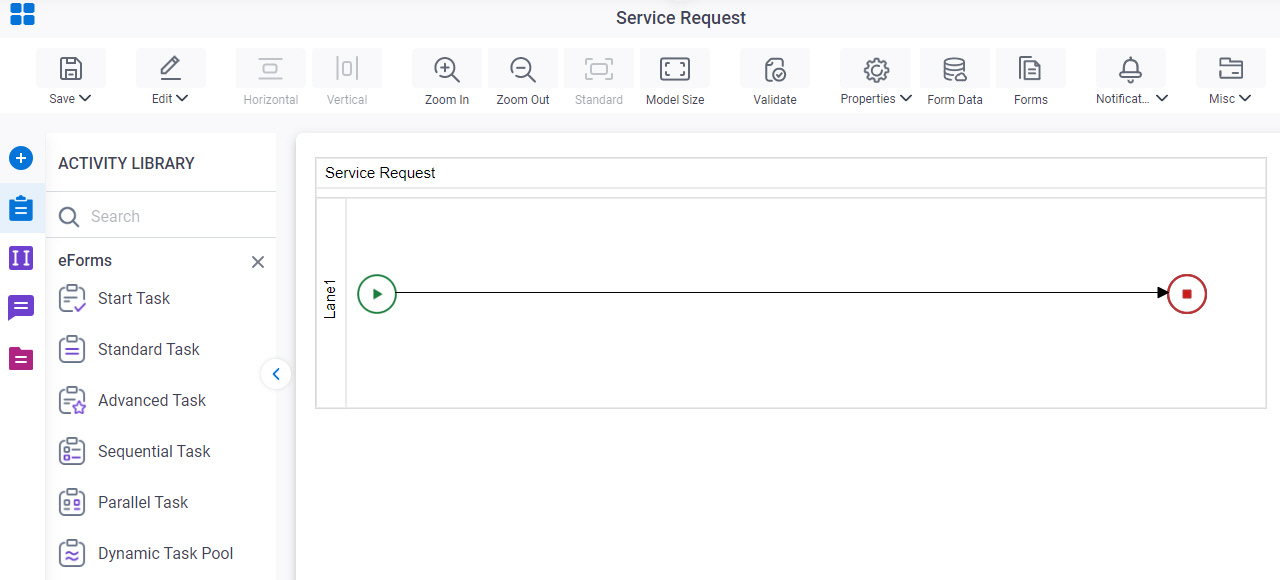
- In Process Builder, in the Activity Library,
open the Database tab.
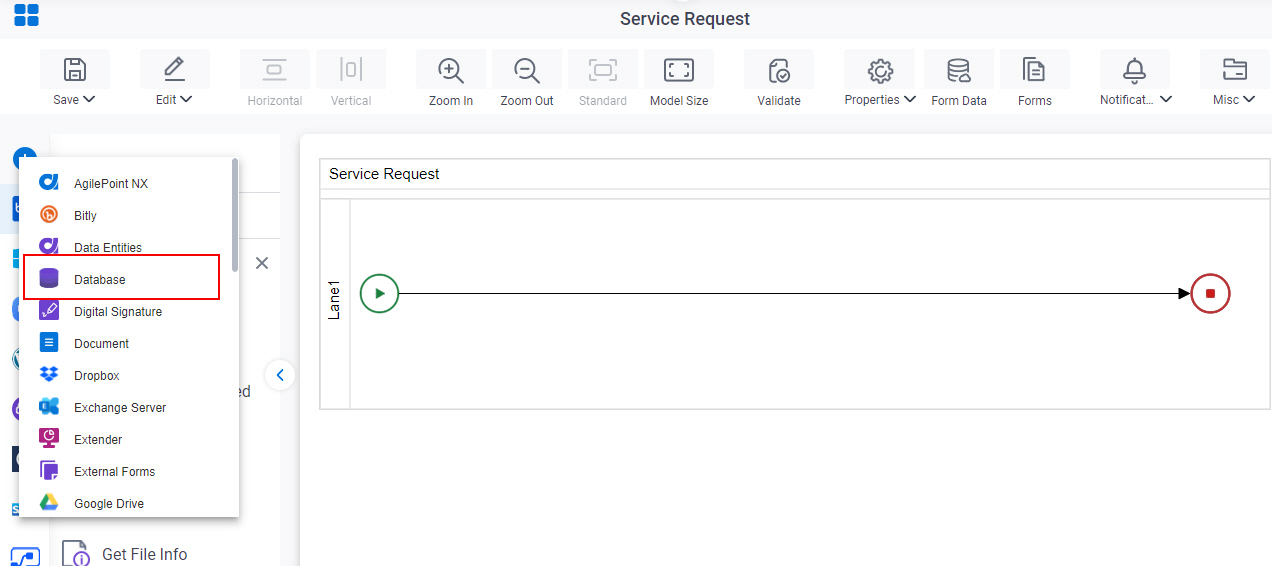
- On the Database tab,
drag the Batch Insert
activity onto your process.
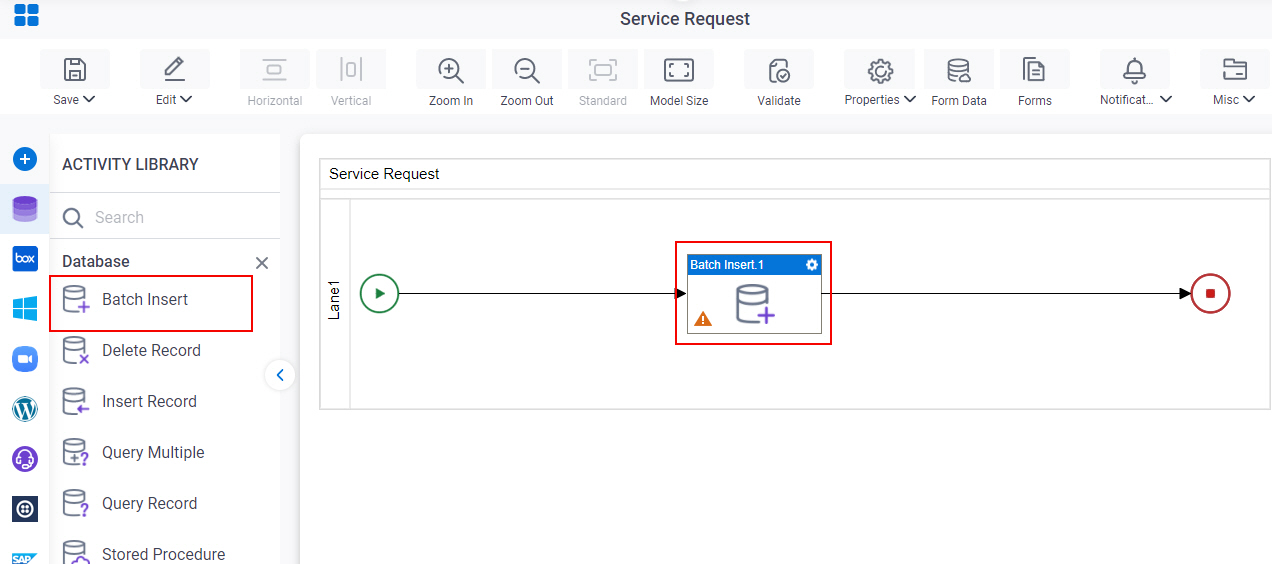
General Configuration
Specifies the basic settings for the Batch Insert activity.
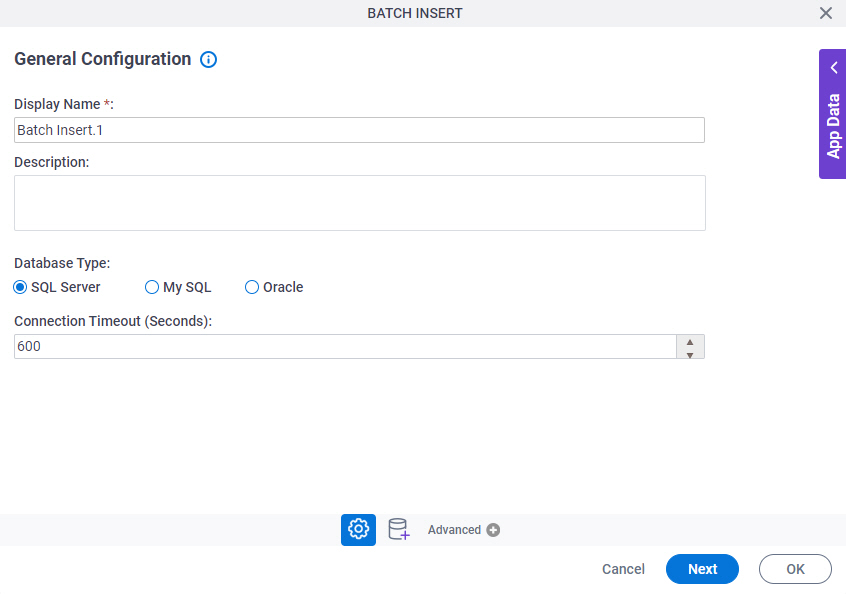
Fields
| Field Name | Definition |
|---|---|
|
Display Name |
|
|
Description |
|
|
Database Type |
|
|
Connection Timeout (Seconds) |
|
Batch Insert Configuration > Specific Table
Specifies where and how to insert the new database records into the database.
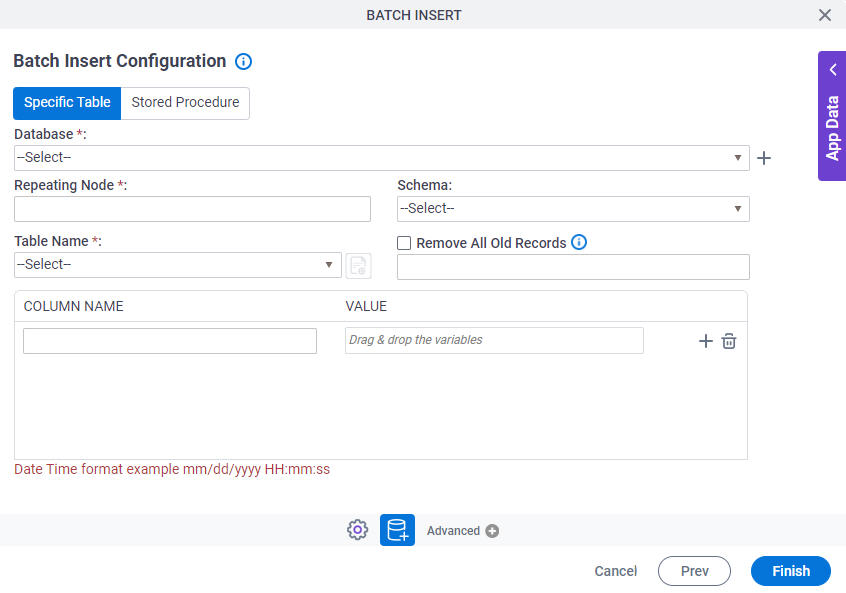
Fields
| Field Name | Definition |
|---|---|
|
Database |
|
|
Create |
|
|
Repeating Node |
|
|
Schema | |
|
Table Name |
|
|
Include Synonyms in the list |
|
|
Remove All Old Records |
|
|
Column Name |
|
|
Value |
|
Create |
|
Delete |
|
Batch Insert Configuration > Stored Procedure
Specifies where and how to put more than one record into the database with a stored procedure.
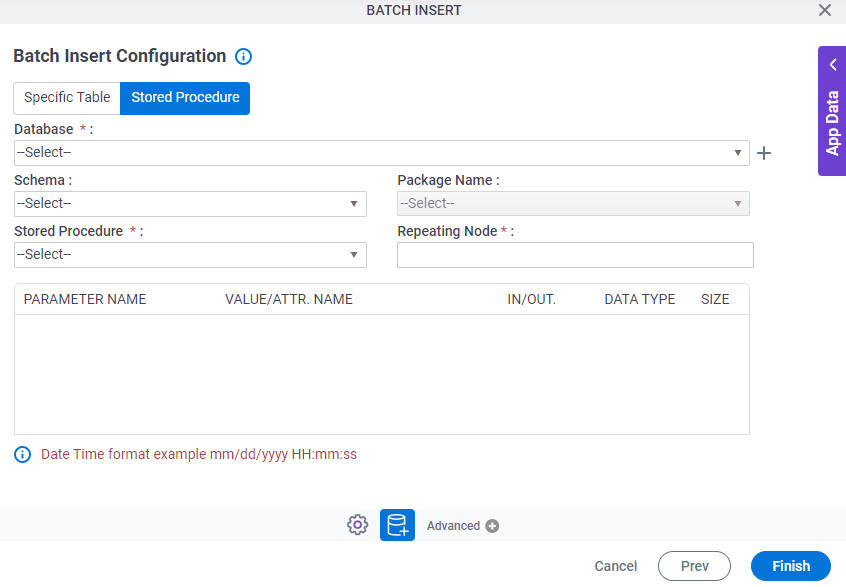
Fields
| Field Name | Definition |
|---|---|
|
Database |
|
|
Create |
|
|
Schema |
|
|
Package Name |
|
|
Stored Procedure |
|
|
Repeating Node |
|
|
Parameter Name |
|
|
Value/Attr. Name |
|
|
In/Out |
|
|
Data Type |
|
|
Size |
|




